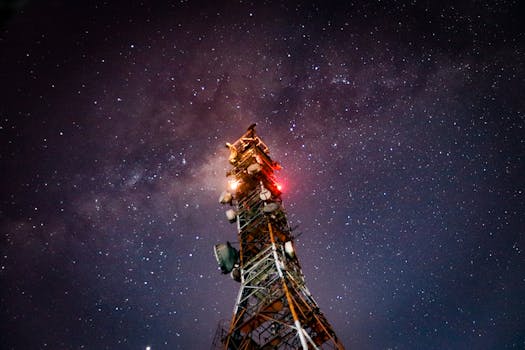
Starlink: Revolutionizing Global Internet Connectivity with Satellite Technology
Starlink is a satellite constellation developed by SpaceX, a private aerospace manufacturer and space transport services company founded by Elon Musk. The project aims to provide high-speed, low-latency internet connectivity worldwide, with a focus on bridging the digital divide and transforming the way we communicate. With its cutting-edge technology and ambitious goals, Starlink is poised to revolutionize the global internet landscape.
History and Development
The concept of Starlink was first announced by Elon Musk in 2015, with the goal of creating a constellation of low-Earth orbit (LEO) satellites that could provide global internet coverage. Since then, SpaceX has made significant progress in developing the technology, with numerous test launches and demonstrations of the system’s capabilities. In 2020, the Federal Communications Commission (FCC) approved SpaceX’s plan to deploy up to 12,000 Starlink satellites in LEO, with the first batch of 60 satellites launched in May 2019.
How Starlink Works
Starlink uses a constellation of small, low-Earth orbit satellites, each weighing around 227 kilograms, to provide internet connectivity. The satellites are equipped with advanced phased array antennas, which allow them to communicate with users on the ground and with other satellites in the constellation. The system uses the Ku and Ka frequency bands to provide high-speed internet connectivity, with download speeds of up to 1 Gbps and latency as low as 20 ms.
The Starlink system consists of three main components: the user terminal, the satellite constellation, and the ground stations. The user terminal is a small, pizza-sized antenna that can be installed at a user’s location, providing a direct connection to the satellite constellation. The satellite constellation is made up of thousands of satellites, each communicating with the user terminals and with other satellites to provide seamless coverage. The ground stations are responsible for connecting the Starlink system to the global internet backbone, allowing users to access online services and content.
Benefits and Applications
Starlink has numerous benefits and applications, from providing internet connectivity to remote and underserved communities to enabling IoT and smart city applications. Some of the key benefits of Starlink include:
Global coverage: Starlink provides internet connectivity to any location on the planet, regardless of geographical constraints or existing infrastructure.
High-speed connectivity: Starlink offers fast download speeds and low latency, making it suitable for applications such as online gaming, video streaming, and cloud computing.
Low cost: Starlink aims to provide affordable internet connectivity, with costs comparable to or lower than traditional satellite internet services.
Disaster recovery: Starlink can provide backup internet connectivity during natural disasters or network outages, ensuring that critical services and applications remain available.
Challenges and Limitations
While Starlink has the potential to revolutionize global internet connectivity, it also faces several challenges and limitations. Some of the key challenges include:
Space debris: The deployment of thousands of satellites in LEO raises concerns about space debris and the potential for collisions with other satellites or objects in orbit.
Interference: Starlink satellites may interfere with other satellite systems or ground-based services, requiring careful management and regulation.
Security: As with any internet service, Starlink is vulnerable to cyber threats and hacking attempts, requiring robust security measures to protect user data and prevent unauthorized access.